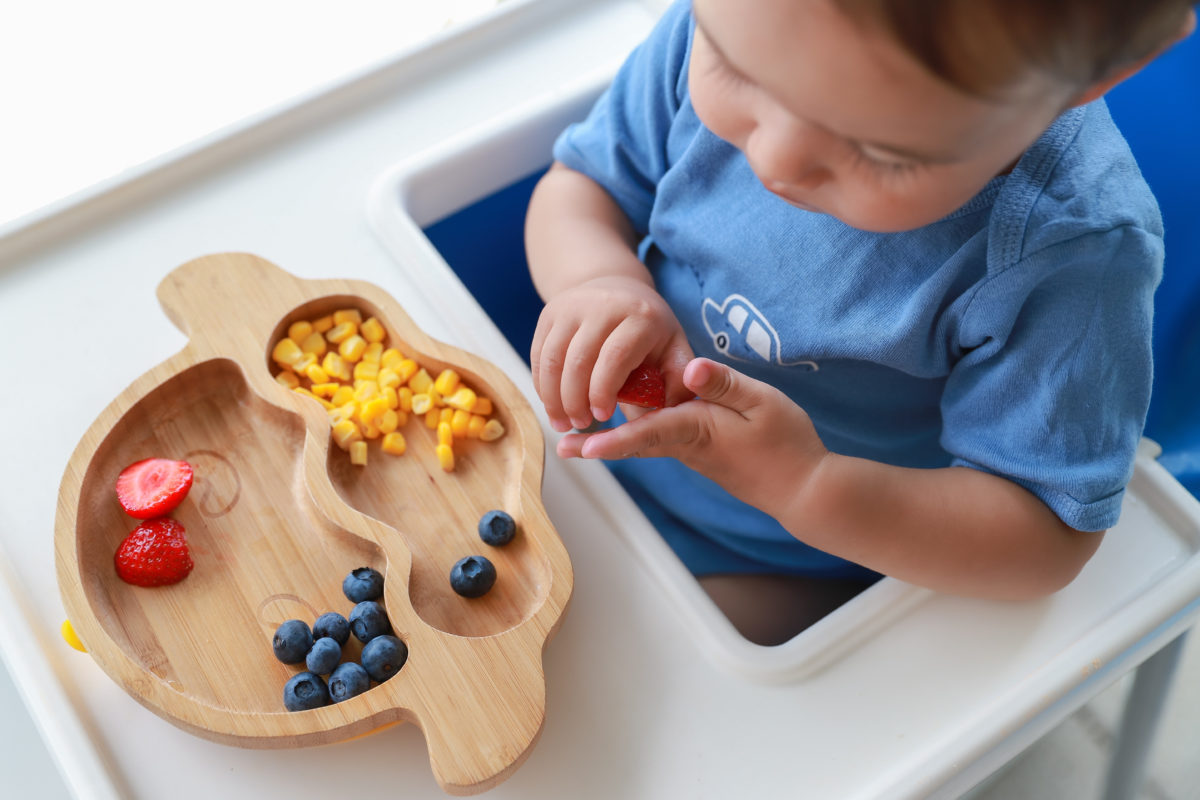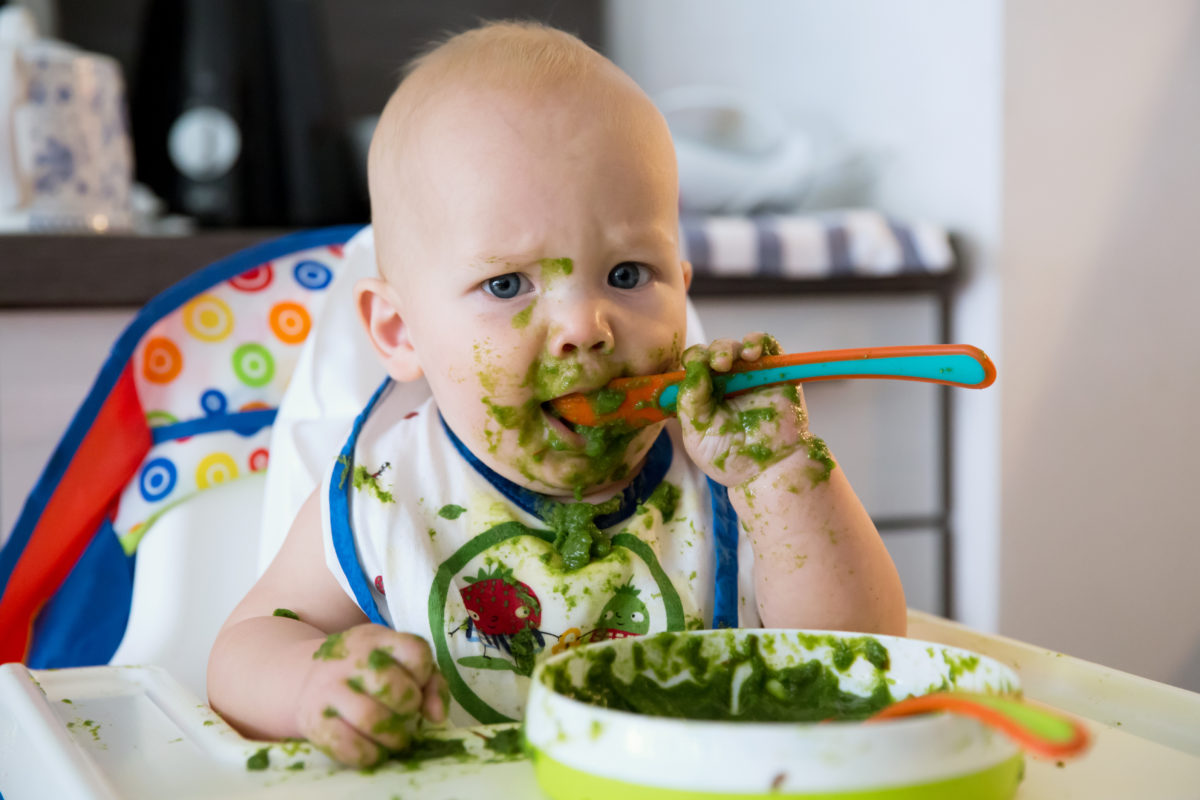The World Health Organization (WHO) defines breastfeeding as ‘one of the most effective ways to ensure child health and survival’ – adding that it’s the ‘best source of nourishment for infants and young children.’
It’s also one of the most beautiful and intimate bonding experiences a mother can share with their child.
That’s why the CDC recommends exclusive breastfeeding for the first six months of a child’s life, and continued breastfeeding while introducing complementary foods for up to two years of age or older.
RELATED: My Infant Has Started Biting Me When I Breastfeed Her: How Can I Start the Weaning Process?
Of course, that’s just a recommendation.
There’s no real right or wrong way to do it, and mothers are encouraged to do what they feel is best for them and their child – whether that means breastfeeding for three years or stopping after two months.
Signs You’re Ready to Stop Breastfeeding

Deciding when to stop breastfeeding is one of the most emotional, personal, and difficult decisions a mother will make in the first few years of their child’s life – but that’s why it’s no one’s decision but yours.
“Don’t feel pressured by what friends are doing or what family members – or even strangers – say. All that matters is what feels right for you and your baby,” says health visitor and longtime nurse Sarah Beeson.
With that said, all good things must come to an end – and breastfeeding is no different.
While every mother will have their own experience with breastfeeding, there are several common reasons why most mothers tend to stop – including breast pain, breast engorgement, lack of milk supply, lack of time or energy, and a baby that’s losing interest. Don’t worry – we’ll dive deeper into each one below!
5. Breast Pain or Discomfort

Experiencing pain or discomfort in your breasts during or after breastfeeding isn’t always a signal to stop breastfeeding altogether, but some mothers have no other option – especially if the pain is that severe.
The most common complaints are sore and cracked nipples, and the most common causes are improper latching or positioning while feeding, plugged milk ducts, breast engorgement, or inflammation (mastitis).
Before you decide to stop breastfeeding, speak with a lactation consultant or healthcare provider. Even if you have no interest in continuing, they can help you relieve pain while transitioning to a baby bottle/cup.
4. Breast Engorgement

Breast engorgement happens when the breasts become overly full of milk, blood, and lymphatic fluid, leading to swelling, tightness, and discomfort. This is common when the breasts aren’t emptied regularly.
To prevent this, try expressing a little milk from each breast, either by hand or with a breast pump, and apply cold packs or a frozen face washer to each breast. Wearing a supportive bra can also relieve pain.
Keep in mind that the body continues to produce milk for several days (sometimes weeks) after a mother stops breastfeeding. If not managed properly, engorgement can lead to more serious issues like mastitis.
3. Lack of Milk Supply

Many new mothers worry that they’re not producing enough milk to fully satisfy their baby, but this is actually much more rare than you’d think. In most cases, mothers have more than enough for their child.
To increase milk production, try feeding or pumping more frequently, making sure the baby is latching properly, pumping between feedings, and staying hydrated. A lactation consultant can also help.
Signs of adequate milk supply include regular weight gain in the baby, wet and dirty diapers in line with what’s expected for their age and/or weight, and the baby appearing satisfied during and after feedings.
2. Lack of Time or Energy

There’s nothing wrong with not having the time or energy to breastfeed your child – in fact, it’s one of the most common reasons mothers give for not wanting to breastfeed, and there’s absolutely no shame in it.
Returning to work, not having enough support, sleep deprivation, having other children in the house, and a desire for more freedom or flexibility – all of these are valid reasons for wanting to stop breastfeeding.
If the physical and mental demand becomes too much to handle, don’t panic – there are alternative ways to ensure your child gets the nutrients they need without breastfeeding, including formula in a bottle.
1. Baby Loses Interest

Self-weaning, also known as natural weaning, is a process in which babies gradually stop breastfeeding without being prompted or encouraged to do so by external routines, interventions, or other methods.
Common signs that your child is losing interest in breastfeeding include skipping feeding sessions, nursing for shorter durations, becoming overly distracted while feeding, and transitioning to solid foods.
True self-weaning is more common after a child is a year old, when they’ve started consuming a variety of solid foods and their nutrition is less dependent on breast milk – but it’s different for every child, of course.
How to Transition From Breast to Bottle

According to the Centers for Disease Control and Prevention (CDC), 83% of all newborns are breastfed at some point in their lives, but only 25% are breastfed exclusively through the first six months of their lives.
In fact, only 58% of all newborns are still being breastfed at six months old, and only 38% at one year old.
If you’re planning on stopping breastfeeding, just remember this – you’re not alone! At any point in time, there are millions of other mothers going through a similar (yet unique) experience as you are right now.
And if you say it’s time to stop breastfeeding, then that’s the end of it – no argument or debate needed.
At that point, the only question is whether you need to buy a bottle or a cup. If your child is nine months or older, you can probably go straight to the cup. Any child younger than that should start with a baby bottle.
Either way, let’s examine some of our most prominent tips and tricks for transitioning from breast to bottle.
5. Invest In the Right Bottle

Finding the right baby bottle is a process – and there’s usually a sense of trial and error involved since most children have different preferences. Your goal is to find the bottle your baby best responds to.
A bottle that closely mimics the breastfeeding experience can facilitate a smoother transition for babies who are used to nursing, but some children might be more interested in a bottle that mimics their pacifier.
Factors to consider include nipple size (a slow-flowing teat is usually best for breastfed babies), nipple shape, bottleneck width, materials, design, venting system, ease of cleaning, and anti-colic features.
4. Give Them a Sample After Breastfeeding

Most experts agree that breastfeeding should be phased out of a child’s routine – as opposed to stopping ‘cold turkey.’ This gives the mother and child an opportunity to get used to the changes that are occurring.
One way to achieve this is by offering a half-ounce of breast milk in a bottle after finishing a breastfeeding session. This ensures your child is relaxed before introducing them to the bottle – preventing any fusses.
Babies aren’t guaranteed to accept the bottle once offered. It might take some time for them to grow used to it, but that’s why we’re phasing it in – the last thing we want to do is overwhelm them while feeding.
3. Replace One Feeding at a Time

Once your baby is familiar and comfortable with the bottle, you can start increasing the number of times you bottle-feed them and slowly decreasing the number of times you breastfeed them during the day.
The best way to go about this is by replacing one feeding at a time. Ideally, you’ll start with their least favorite feeding of the day – either the one they consume the least or the one they’re least interested in.
We also recommend establishing a quiet, calm, distraction-free feeding zone when introducing a baby bottle to the routine. The more relaxed your baby – and you – are, the smoother the session may be.
2. Have Your Partner Initiate the Transition

From the moment your child is born, they associate mama with mealtime. If you’re trying to wean your baby off the breast and onto a bottle, it might be best to distance yourself for the first few bottle feedings.
This is where your partner comes in to save the day. Have them bottle feed your child in a separate room to help them disassociate mealtime with mama – and, instead, start to associate mealtime with the bottle.
You can also enlist the help of a caregiver, grandparent, or anyone else you trust with your child – but it might be best to choose a male figure to avoid confusion. After a few sessions, mama can make a return.
1. Make Them Feel Secure & Comfortable

Breastfeeding is more than just a source of nutrition for your child. It’s also a source of comfort and security – increasing the physical closeness between you and your child in their most vulnerable years.
Try to maintain this physical closeness when bottle-feeding by holding your child snugly, making eye contact, and engaging in skin-to-skin contact. This can help mimic the intimacy of breastfeeding.
Breast milk is naturally warm, so warming the bottle milk to a similar temperature can make the transition more appealing. Warming the nipple of the bottle can also make it more similar to the mother’s skin.
How to Transition From Liquids to Solid Foods

Much like the transition from breast to bottle, the transition from breast to solid food is another significant milestone for a mother and child – except this time, you’re introducing them to new tastes and textures.
This is called the weaning process, and it usually begins at around six months old.
You’ll know your child is ready for the weaning process if 1) they can sit in a still position while holding their head and neck steady, 2) they have the coordination to look at their food, pick it up, and put it in their mouth, 3) their tongue-thrust reflex allows them to swallow without choking, and 4) they show an interest.
You can continue to breastfeed your child during this process – in fact, most experts recommend it – but this is around the same time children transition to bottle feeding or begin drinking out of a sippy cup.
Either way, your child will need solid foods at some point in their life – and it’s up to you, as their parent, to encourage a smooth transition. Here’s how you can achieve this in a safe, nutritious, and positive way.
5. Best Starter Foods for Your Baby

When introducing solid foods for the first time, try starting and ending mealtime with breastmilk, and never give them more than a half teaspoon at a time. Here are some of the best starter foods for your baby:
Iron-fortified cereals (like rice, oatmeal, or barley), pureed vegetables (sweet potato, carrots, peas, and butternut squash), pureed fruits (apples, pears, avocados, bananas, and peaches), and soft-cooked eggs.
As they grow older, start to introduce different textures to their diet. Instead of pureed foods, gradually introduce thicker mashes and, eventually, finely chopped foods to help them develop their chewing skills.
4. Foods to Avoid At All Costs

While there are certain foods you’ll want to target when introducing solid foods, there are also several foods you want to avoid at all costs – either because they’re a choking hazard or unhealthy for the child.
For example, the CDC recommends avoiding honey before 12 months, unpasteurized drinks or foods, foods with added sugars, sugar-sweetened drinks, foods high in salt, cow’s milk, juice, and caffeine.
You’ll also want to keep an eye out for allergic reactions – which are characterized by a clear runny nose, coughing, diarrhea, eczema, hives, facial swelling, wheezing, vomiting, difficulty breathing, and more.
3. Gagging vs. Choking

Gagging is a common, natural, and protective reflex that helps babies avoid choking by moving food away from the airway if it goes back too far into the mouth. Gagging is usually nothing to fear or worry about.
Choking is more serious and occurs when a piece of food blocks the airway, making it difficult or impossible for the baby to breathe. Quick recognition and response are critical in choking situations.
While gagging might be unsettling to witness, it’s a part of the learning process as babies explore solid foods. Choking, however, is a medical emergency. Understanding the difference is extremely important.
2. Expect a Mess – And Don’t Fight It!

There’s nothing wrong with allowing your child to use their hands while eating – no matter how messy it gets – but many experts recommend using this as an opportunity to teach your child how to use utensils.
Even then, messes are inevitable and need to be tolerated – expected, even. Before you start mealtime, make sure you have wipes nearby, plenty of bibs handy, and a washable mat or newspaper for mitigation.
Allowing your baby to touch, squish, and even throw food helps them understand textures, learn how to grasp and manipulate objects, and discover cause and effect – so don’t rid them of that experience!
1. Ease Them Through the Transition

Going from liquids to solid foods can be an overwhelming experience for any baby – and the same goes for the mother. In fact, it’s a process that could take several weeks and even months to master.
Easing your child into it involves patience, experimentation, and a willingness to embrace the mess and unpredictability that come with it. It’s a hectic time for parents, but one that should be celebrated.
Your child might initially reject new foods. That’s okay! It can take multiple exposures to a new taste or texture before they accept it. If they refuse something, try again in a few days – they might open up to it!
Make This a Memorable Experience for You and Your Child

There’s no cookie-cutter solution to stopping breastfeeding and no size-fits-all approach to weaning. Everyone’s going to have a different experience with it, and that’s something parents need to accept.
But that doesn’t mean we can’t help one another.
And that’s exactly why we created Answers by MamasUncut – a Q&A forum with a community of moms and medical experts who are happy to share our knowledge with moms in need of parenting answers.
YOU MAY ALSO LIKE: Tips on Weaning a 2-Year-Old Toddler Off of Their Pacifier?
One anonymous user recently asked, “How do I stop breastfeeding?” and has already received some quality responses. If you’d like to join in on the conversation, you can do so by clicking here.
Contents
Mamas Uncut is THE online place for moms. We cover the latest about motherhood, parenting, and entertainment as well – all with a mom-focused twist. So if you're looking for parenting advice from real parents, we have plenty of it, all for moms from moms, and also experts. Because, at the end of the day, our mission is focused solely on empowering moms and moms-to-be with the knowledge and answers they’re looking for in one safe space.
